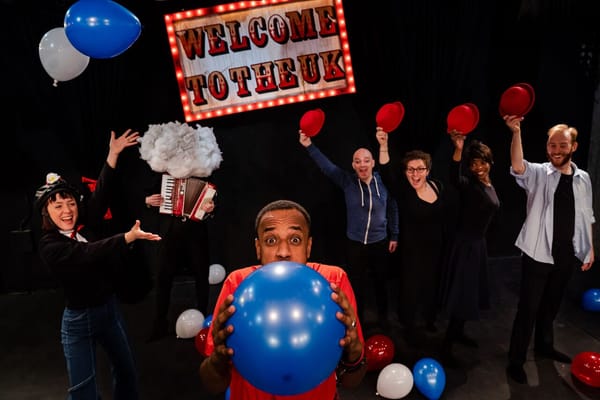Witness for the Prosecution
Another all-round pleasing hit from the queen of crime

Who doesn’t remember reading Agatha Christie’s books as a child? Murder mysteries, full of suspense and intrigue, invariably with an unexpected twist or surprising revelation in the dénouement. Her enduring popularity has seen a plethora of film, stage and West End adaptations of her stories, such as Kenneth Branagh’s relatively recent Murder on the Orient Express.
Witness for the Prosecution was adapted for the stage by Christie herself from her short story Traitor Hands. As the title suggests, the courtroom drama, a small part of the original story, becomes the focus of the play. And where better to set an exciting courtroom drama than an actual courthouse?
Lucy Bailey’s production is set in the spectacular Council Chamber of the old London County Hall – and boy, do she and designer William Dudley make use of the grandiose surroundings! From the moment you step in, the austere marble architecture and sweeping staircases immediately conjure the solemn atmosphere of a courthouse. The impression only intensifies on entering the Chamber itself – a soaring domed ceiling, Lady Justice on the wall, and concentric rows of red leather seats, each with its own tiny wooden desk, looking down upon the small stage area. You feel like you’re actually in court, watching things happen in real time. Discreet, brass-covered speakers are dotted between the seats at ear-level, imperceptibly generating the ambient murmurs of the courtroom. This is quite clever on the part of Dudley and sound designer Mic Pool. Not only does it overcome the acoustic challenges of the vaulted ceiling, but when particular events happen on stage, the shocked gasps that fill the room seem to come from the audience itself. The illusion of being ‘in court’ is very real – the witnesses are even called from outside the chamber, and make their way through the audience to the stand.
The trial we’re attending is that of the young Leonard Vole (Daniel Solbe), accused of murdering a rich old lady of his acquaintance for her money. Sir Wilfrid Roberts (Jasper Britton), convinced of his innocence, must fight his old rival Myers (William Chubb) in court to save him from the noose. But with all the evidence against Vole, it looks to be a losing battle. And there’s Vole’s enigmatic foreign wife, Romaine (Emma Rigby)…
It’s a suitably melodramatic, if somewhat cliché, plot. At least up till the last fifteen minutes of the play, when everything is upended in not one, but two, dramatic twists! It’s an Agatha Christie plot after all. Not giving too much away, it definitely comes as a surprise and leads the play to its thrilling conclusion… If I have one complaint, it’s that the twists are almost too out of the blue. Unlike the best mystery novels where you can guess who the killer is, we’re almost completely in the dark until the big reveal.
Solbe is utterly convincing as Leonard Vole – you’d never believe the honest-faced young lad capable of murder. Or would you? Opposite him, Rigby makes a captivating Romaine – seductive, sly and ever so foreign with her thick German accent. And Britton looks like he was plucked from the Queen’s Bench Division to play Sir Wilfrid Roberts, with Chubb’s dogmatic and slightly prissy Myers serving as his foil. Though she doesn’t spend much time on stage, Phoebe Marshall also deserves a special mention for her delightfully vapid portrayal of Sir Wilfrid’s secretary Greta.
Witness for the Prosecution is definitely a night to remember. It’s not exactly subtle or soul-searching with its trope-heavy plot and stereotypical characters, but then again it’s never promised to be anything else. With its spectacular setting and dramatic plot, it’s entertainment anyone will enjoy, regardless of whether they prefer Nietzsche or Netflix.
-4 stars









